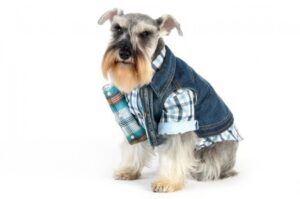Dogs with skin allergies need special care and attention to prevent discomfort and potential health risks. Skin allergies can cause itching, irritation and mostly grow into an infection.
As a responsible dog owner, it is important to prioritize your dog’s safety and well-being.
Fortunately, there are several innovative devices available on the market that will help specifically to address the needs of dogs with skin allergies.
In this article, we will explore some of the top safety devices that can help alleviate discomfort and enhance the overall quality of life for your dog.
Understanding skin allergies in dogs
Dog skin allergies, also known as allergic dermatitis, refers to a state where a dog’s immune system overreacts to certain substances in the environment, leading to an allergic reaction on the skin.
These substances, known as allergens, can vary and may include pollen, dust mites, mold spores, certain foods, chemicals, or even flea saliva.
When a dog with a predisposition to allergies comes into contact with these allergens, the immune system reacts by releasing histamines and other chemicals, resulting in inflammation and irritation of the dogs skin.
Here are some Symptoms of dog skin allergies: they include
- Intense itching
- Redness and inflammation
- Skin rash or hives
- Hair loss
- Hot spots (moist, infected areas)
- Recurrent ear infection
- Skin infections
Below are the common triggers for skin allergy in dogs:
- Environmental allergens
- Flea allergies
- Food allergies
- Contact allergens
- Insect bites
- Medications
- Seasonal changes
It’s important to note that different dogs have different sensitivities, and the specific triggers can vary from one dog to another.
If you suspect your dog having a skin allergy, it is best to talk to a veterinarian for a proper diagnosis and to know the specific triggers affecting your dog.
Importance of safety devices for dogs with skin allergies
It is important to prevent dogs from developing or experiencing skin allergies for several reasons:
1. Comfort and Well-being:
Skin allergies can cause significant discomfort for dogs. The constant itching, scratching, and irritation can lead to physical and psychological distress.
By preventing skin allergies, dogs can enjoy a higher quality of life, free from constant itching and pain.
2. Skin Health:
Allergic reactions can damage the skin, leading to inflammation, redness, and lesions. Dogs with skin allergies are more prone to secondary skin infections, which can make the situation worse and require additional treatment.
By preventing skin allergies, the integrity of the skin barrier is maintained, reducing the risk of infections and promoting overall skin health.
3. Reduced Disruption to Daily Life:
Dogs with skin allergies may have difficulty focusing, sleeping, or engaging in normal activities due to the constant itching and discomfort. This can impact their behavior, mood, and overall well-being.
Preventing skin allergies allows dogs to lead a more normal and less disrupted daily life.
4.cost savings:
Skin allergies often require veterinary visits, diagnostic tests, medications, and treatments, all of which can be costly.
By preventing skin allergies, pet owners can potentially save money on medical expenses associated with managing allergic reactions and related complications.
5. Long-Term Health:
Chronic or recurrent skin allergies can have long-term effects on a dog’s health. It can weaken the immune system, increase susceptibility to other diseases or infections, and impact overall well-being.
By preventing skin allergies, dogs have a better chance of maintaining optimal health and avoiding potential complications.
Preventing skin allergies in dogs involves identifying and avoiding allergens, maintaining proper hygiene, constant grooming, using the right skincare products, and following a balanced diet.
It’s important to work closely with a veterinarian to develop a preventive plan tailored to the specific needs of your dog, especially if they are prone to these allergies.
Types of Safety Devices Available for the prevention of skin allergy in dogs

Protective Clothing:
Protective clothing, such as shirts, bodysuits, or vests, can act as a physical barrier between a dog’s skin and potential allergens.
These garments cover large areas of the body and protect against environmental allergens, insect bites, and sun exposure. They are typically made of breathable, hypoallergenic materials that provide comfort while minimizing allergen contact.
Allergen-blocking Collars:
Allergen-blocking collars are designed to repel or neutralize common allergens that can trigger skin allergies.
These collars are often infused with natural essential oils or barrier creams that create a protective barrier around the dog’s neck, preventing allergens from coming into direct contact with the skin.
Paw Protectors:
Paw protectors, such as boots or socks, shield a dog’s paws from allergens, irritants, and rough surfaces. They can help prevent contact allergies and reduce the accumulation of allergens between the toes or paw pads.
Paw protectors also provide added protection against hot pavement, sharp objects, or chemicals that can irritate the paws.
E-Collars or Elizabethan Collars:
E-collars, also known as Elizabethan collars or cone collars, are commonly used to prevent dogs from scratching or biting at their skin.
They create a barrier around the head and neck, restricting access to irritated areas and preventing self-inflicted injuries.
E-collars are particularly useful during the healing process or when managing acute allergic reactions.
Air Purifiers:
Air purifiers help improve indoor air quality by filtering out airborne allergens such as pollen, dust mites, mold spores, and pet dander.
These devices can reduce the overall allergen load in the environment, providing a cleaner and safer living space for dogs with skin allergies.
Medication Dispensers:
Medication dispensers automate the process of administering medications, such as antihistamines or allergy-specific medications, to dogs with skin allergies.
These devices ensure accurate dosing and timely administration, promoting effective treatment and symptom management.
Cooling Mats or Blankets:
Cooling mats or blankets provide a cool surface for dogs to lie on, helping to alleviate itching and reduce inflammation associated with skin allergies.
These devices are particularly beneficial during hot weather or when a dog is experiencing discomfort due to allergic reactions.
It’s important to select safety devices based on the specific needs and sensitivities of your dog. Always ensure to Consult with a veterinarian to determine which devices are most suitable and effective for your dog’s individual situation.
Factors to Consider When Choosing Safety Devices

When selecting safety devices for dogs with skin allergies, there are several factors to consider to make sure you select the most suitable options.
Below are some important factors to take into consideration:
1. Allergen Specificity:
Consider the specific allergens that trigger your dog’s skin allergies. For example, if your dog is primarily allergic to environmental allergens like pollen or dust mites, look for safety devices that provide protection against these specific allergens.
Understanding the specific triggers will help you choose the most effective devices.
2. Comfort and Fit:
The comfort and fit of safety devices are crucial for your dog’s willingness to wear them. Ensure that the devices are appropriately sized for your dog’s breed and body shape.
Look for materials that are soft, breathable, and hypoallergenic to minimize any potential irritation or discomfort. Adjustable straps or closures can help achieve a secure and comfortable fit.
3. Ease of Use:
Consider the ease of use and convenience of the safety devices. Some devices may require training or acclimation for your dog to become comfortable with them.
Choose devices that are relatively easy to put on and take off, especially if they need to be worn for extended periods.
4. Durability and Quality:
Assess the durability and quality of the safety devices. They should be able to withstand regular use and potential wear and tear.
Look for well-constructed devices made from durable materials to ensure they provide long-lasting protection.
5. Effectiveness:
Research and evaluate the effectiveness of the safety devices in preventing allergen contact or minimizing self-inflicted injuries.
Read reviews, consult with veterinarians or other dog owners who have used similar devices, and consider their experiences and recommendations.
6. Veterinary Guidance:
Consult with your veterinarian before selecting safety devices. They can provide valuable insights and recommendations based on your dog’s specific needs, allergies, and medical history.
Veterinarians can also help determine if any specific safety devices may interact with your dog’s existing medications or treatments.
7. Cost:
Evaluate the cost of the safety devices. While it’s important to consider your budget, also keep in mind that investing in high-quality, effective devices may provide long-term savings by reducing the need for veterinary visits or treatment of complications associated with skin allergies.
By considering these factors, you can make informed decisions when choosing safety devices that will effectively protect your dog from skin allergies and promote their overall well-being.
Frequently Asked Questions (FAQ)
Here are some frequently asked questions about safety devices for dogs with skin allergies:
Q1. Are safety devices a substitute for veterinary treatment?
Safety devices are not a substitute for veterinary treatment. While they can help prevent allergen exposure and minimize self-inflicted injuries, it’s important to consult with a veterinarian for proper diagnosis, treatment, and management of skin allergies in dogs.
Safety devices are typically used as part of a comprehensive approach to managing skin allergies, along with veterinary guidance and appropriate medications.
Q2. How do I determine if my dog has a skin allergy?
If you suspect your dog has a skin allergy, it’s important to consult with a veterinarian for an accurate diagnosis.
Common signs of skin allergies in dogs include excessive itching, scratching, biting, redness, inflammation, rashes, hair loss, or recurrent ear infections. A veterinarian can perform tests, such as skin scrapings or allergy testing, to identify the specific allergens triggering your dog’s allergies.
Q3. Can safety devices completely eliminate skin allergies in dogs?
Safety devices can help minimize allergen exposure and reduce self-inflicted injuries, but they may not completely eliminate skin allergies in dogs.
Allergies are often complex and multifactorial, and while safety devices can provide relief and protection, they may not address the underlying cause of the allergies.
Working closely with a veterinarian to develop a comprehensive management plan is essential for long-term allergy control.
The Bottom line:
When it comes to dogs with skin allergies, ensuring their safety and comfort is of utmost importance.
The devices mentioned in this article, including protective clothing, allergen-blocking collars, air purifiers, paw protectors, and medication dispensers, can play a vital role in managing skin allergies and minimizing potential risks.
However, it is crucial to consult with a veterinarian to determine the most suitable devices and treatments for your dog’s specific condition.
By combining these innovative devices with proper care, attention, and medical guidance, you can provide a safe and happy life for your beloved furry companion, even with skin allergies.







Leave a comment